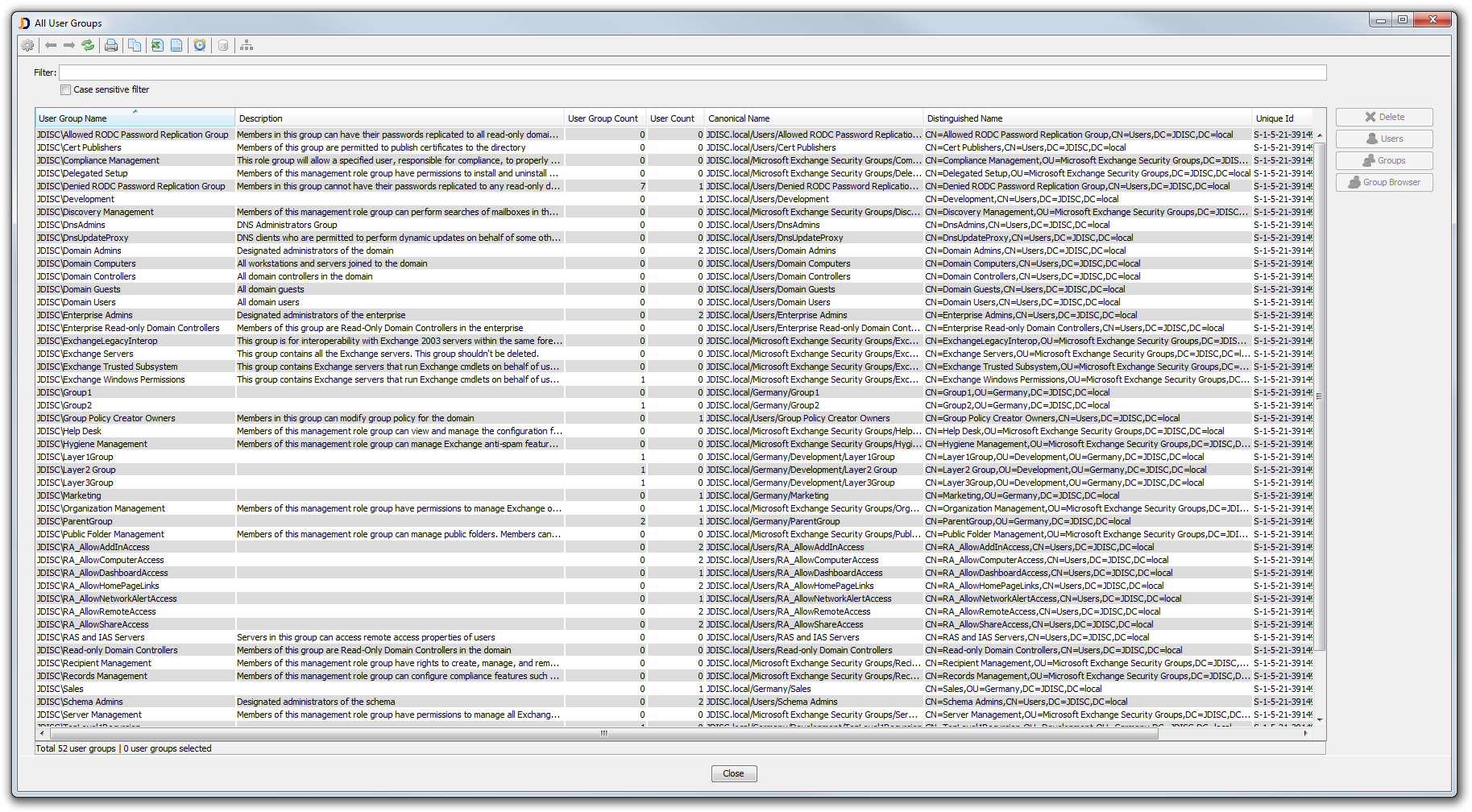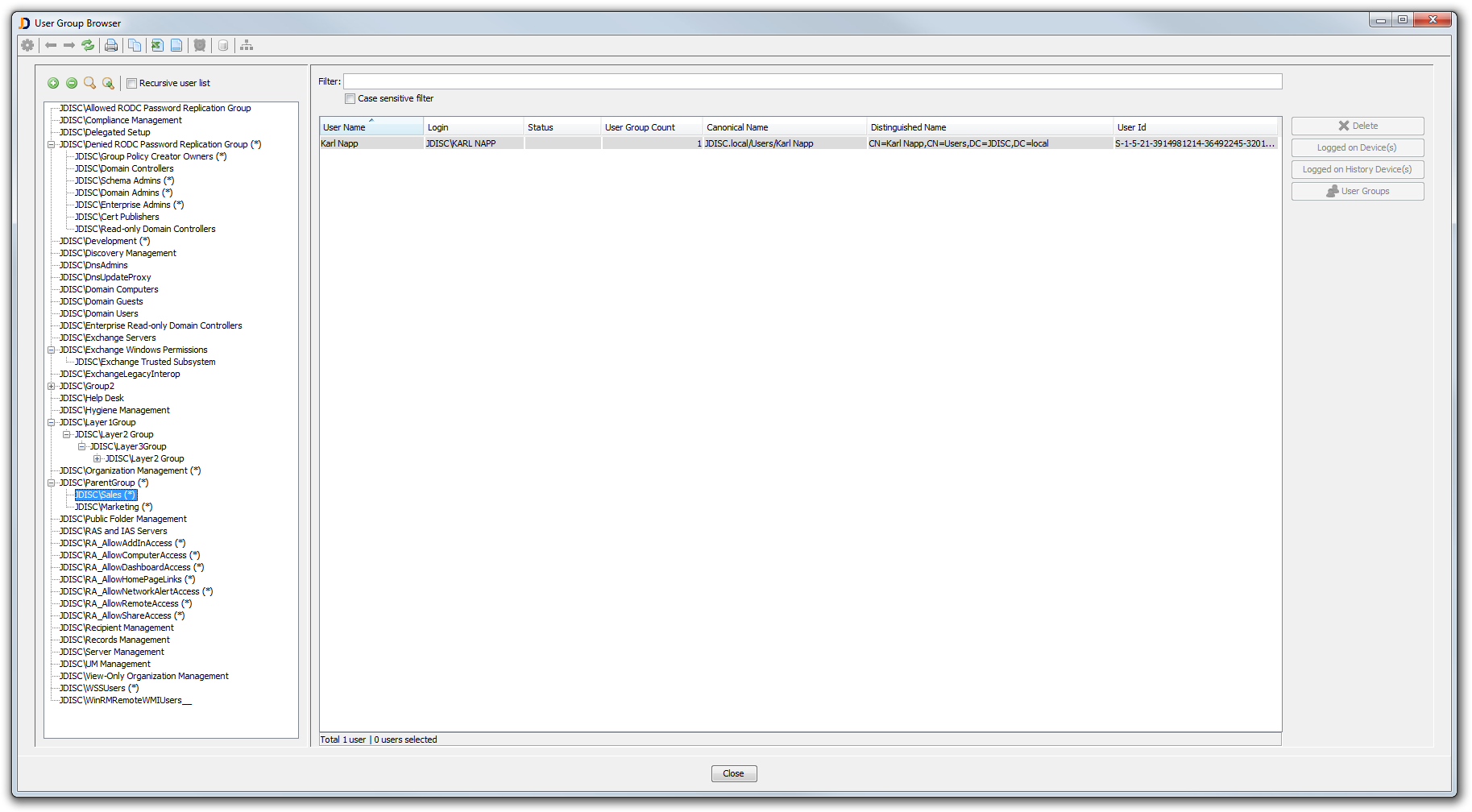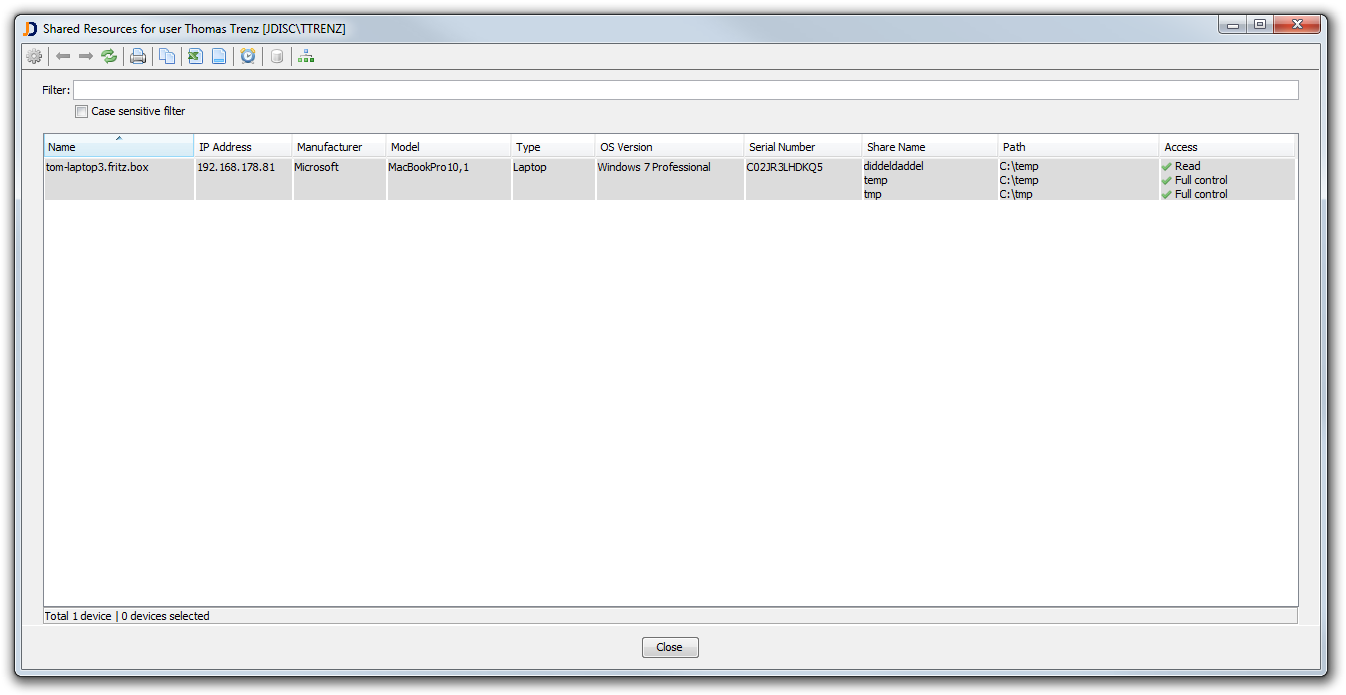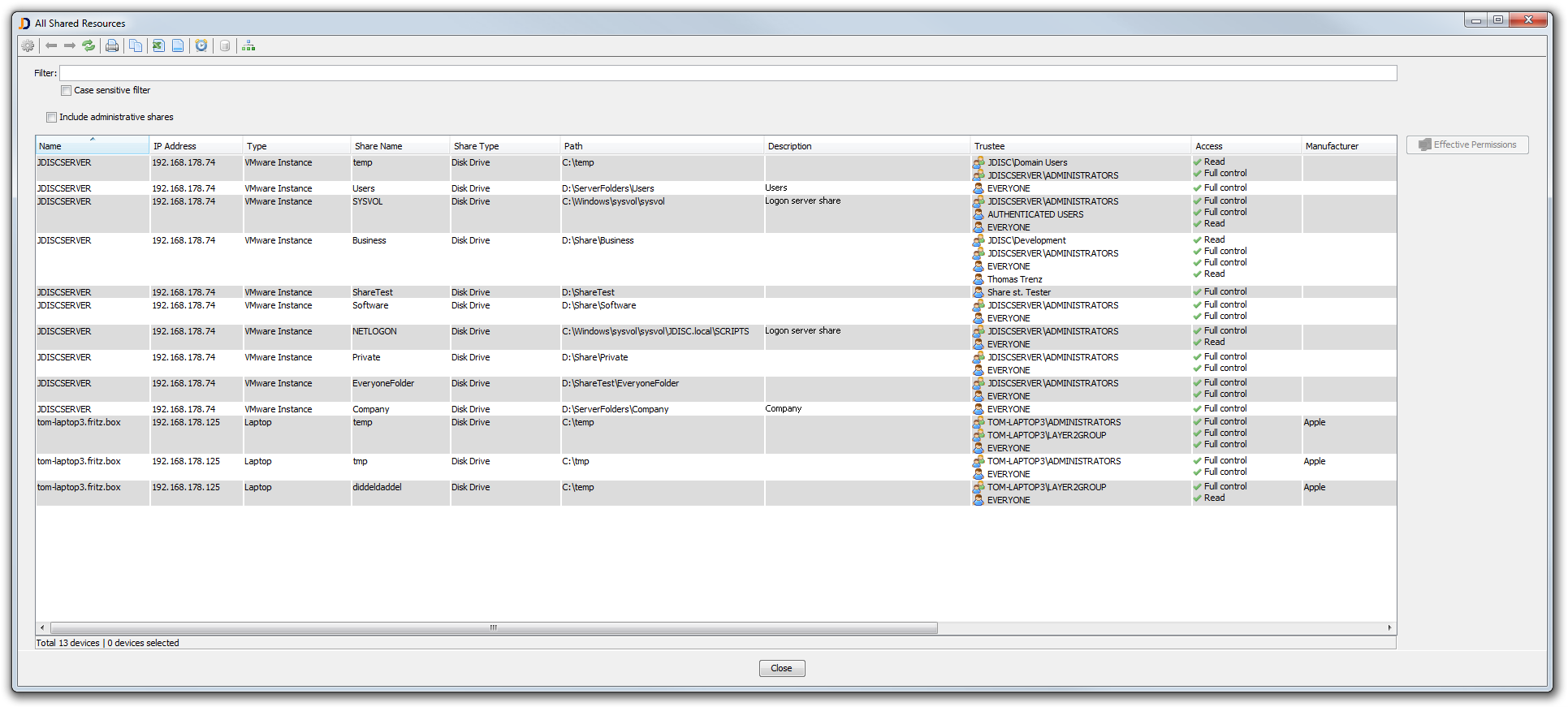JDisc Discovery 3.3 – Network Documentation with our new Major Release together with the new Security Add-On
after a development phase of approximately nine months, we are glad to announce a new member of our JDisc Discovery product family. Together with the new major release JDisc Discovery 3.3, we introduce the Security Add-On. The third highlight is the excellent collaboration with SHI.
The Security Add-On covers security and permission related aspects. Its first version focusses on network shares and its permissions. Finding out who has permissions on what shares is just a matter of a few clicks.
What’s new in JDisc Discovery 3.3?
Our development worked on both – new features and performance improvements (especially with very large reports > 1 million rows).
User and User Group Discovery
We have improved our Microsoft Active Directory discovery. In addition to the directory structure, we scan all users and user groups and assign them to their defining organizational units. JDisc Discovery scans local users and user groups as well as users and groups that belong to a Microsoft Active Directory installation.
The user group report lists all user groups together with important properties such as the distinguished name, the number of member users and user groups, the SID, name and description.
Screenshot: All User Groups
The user report displays all users that belong to the Active Directory environment together with properties such as user name, login, the number of groups that the user belongs to, the distinguished name and the SID.
Screenshot: All Users
User Group Browser
Open our brand new user group browser in order to browse the user group hierarchy. The user group browser shows the user group hierarchy in the left are and the members of the selected user group in the main report section. The checkbox Recursive user list within the tree’s toolbar enables or disables the recursive group membership for the main report. When disabled, the report shows only the directly assigned users whereas when enabled, it displays all member users (either direct membership or through nested user groups).
Screenshot: User Group Browser
Performance Improvements
Some users reported report performance issues with very long reports (> 1 million rows). Reports of that size were very slow to scroll, filter and sort. We have greatly improved the performance for filtering and sorting. Those changes enable users to deal with very large tables.
Usability Improvements
We added some general usability improvements. For instance, the focus is within the filter field in order to immediatly start with entering a filter text. Buttons within the dialogs simplify the execution of the most common tasks within a report such as Delete. Furthermore, we have added a lot of new icons to menus and toolbars.
Improvements for Software License Management (SLM)
Although we were discovering software since our beginning, we were not really ready for software license management projects. Software license management for Microsoft software requires the discovery of the edition and the license keys. SHI is our key partner when it comes to software license management. Together with their experienced engineers, we have been able to fix many clitches where our software discovery was not as good as required by software license management services.
We will continue to work with SHI on more advanced features such as exchange farm discovery or getting sharepoint details.
The new JDisc Discovery Security Add-On
JDisc Discovery’s Add-Ons enhance the core product by features that not every user might need. We already offer three add-ons and with JDisc Discovery 3.3, we are going to introduce a new add-on called “Security Add-On”.
The scope of the Security Add-On is to get security and permission related information such as permissions on shared resources on the network. The first version starts with discovering permissions for network shares on Windows computers. We identify the list of users and user groups that are entitled to access a specific network share together with the detailed permissions. The full list of users that are entitled to access a shares can be determined with the Effective Permissions button. The button calculates the permissions for each user based on the group membership and group permissions.
Effective Permissions for Shared Drives
There are many new reports which explain access to shares in more detail. For instance, it is possible to list all shared resources that a specific user has access to. Coming from the shares, it is possible to list all users that have access to the share.
All Shared Resources for a selected User
New global reports list all shares on the network.
All Shared Resources with their Permissions
In the future, we are going to enhance the security add-on. Of course, we will listen to our customers on their requirements. Some ideas we have are:
- Find the trust relationship between DNS domains
- Get permissions for MS Exchange mailboxes
- Get permissions for Sharepoint installations
- and a lot more that you are going to tell us 🙂
Read more and download the software from our JDisc Discovery 3.3 page!
As usual, we are happy to receive your feedback. So don’t hesitate to reply to this blog entry or send us your ideas.
Cheers,
Thomas







